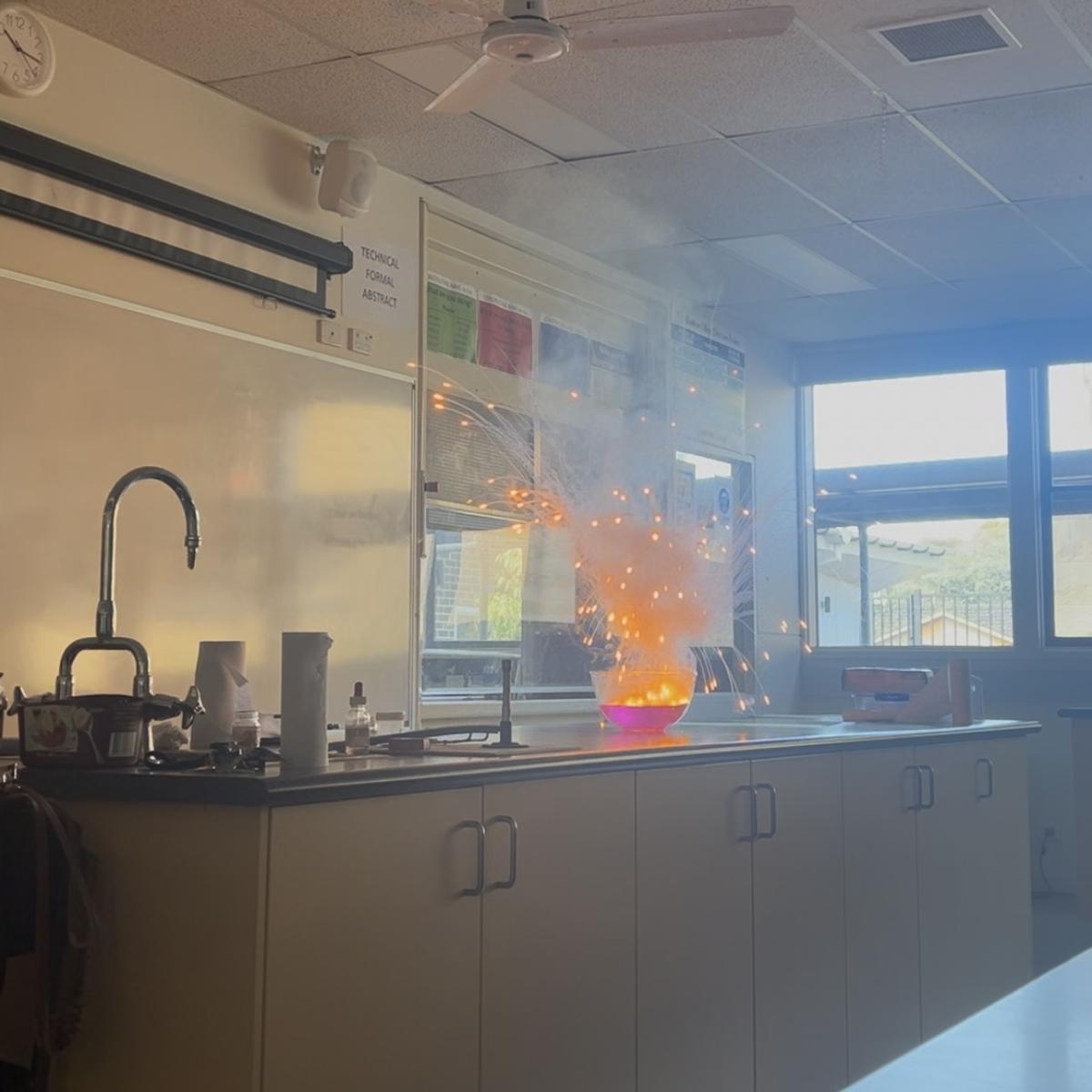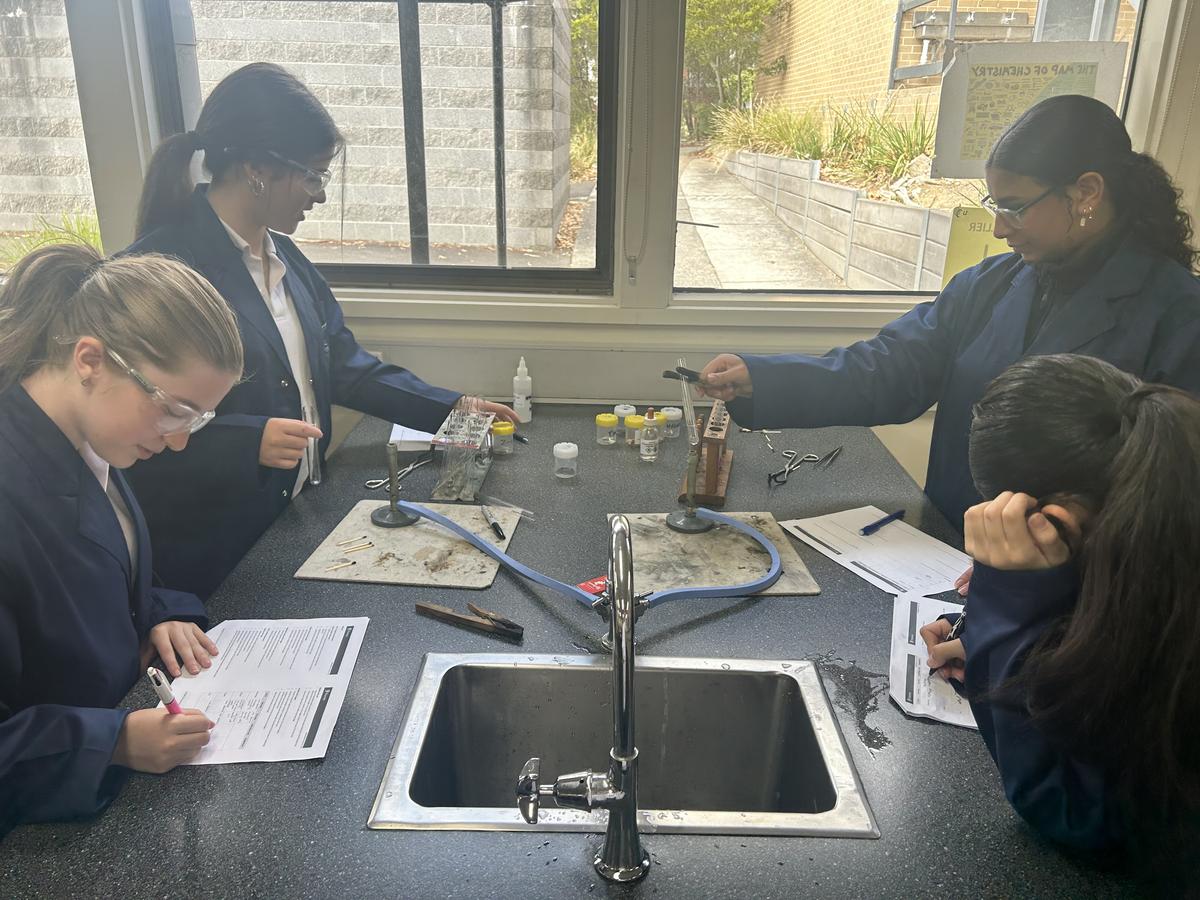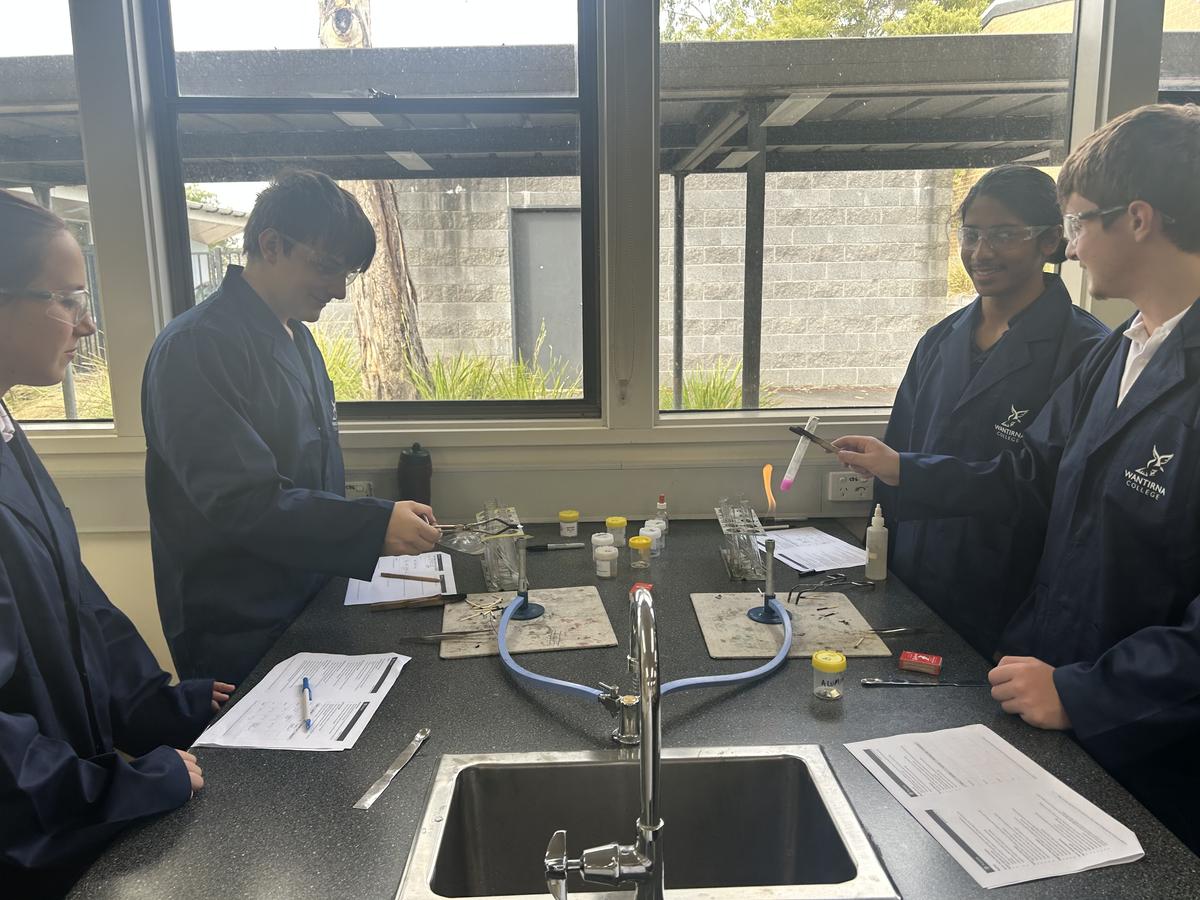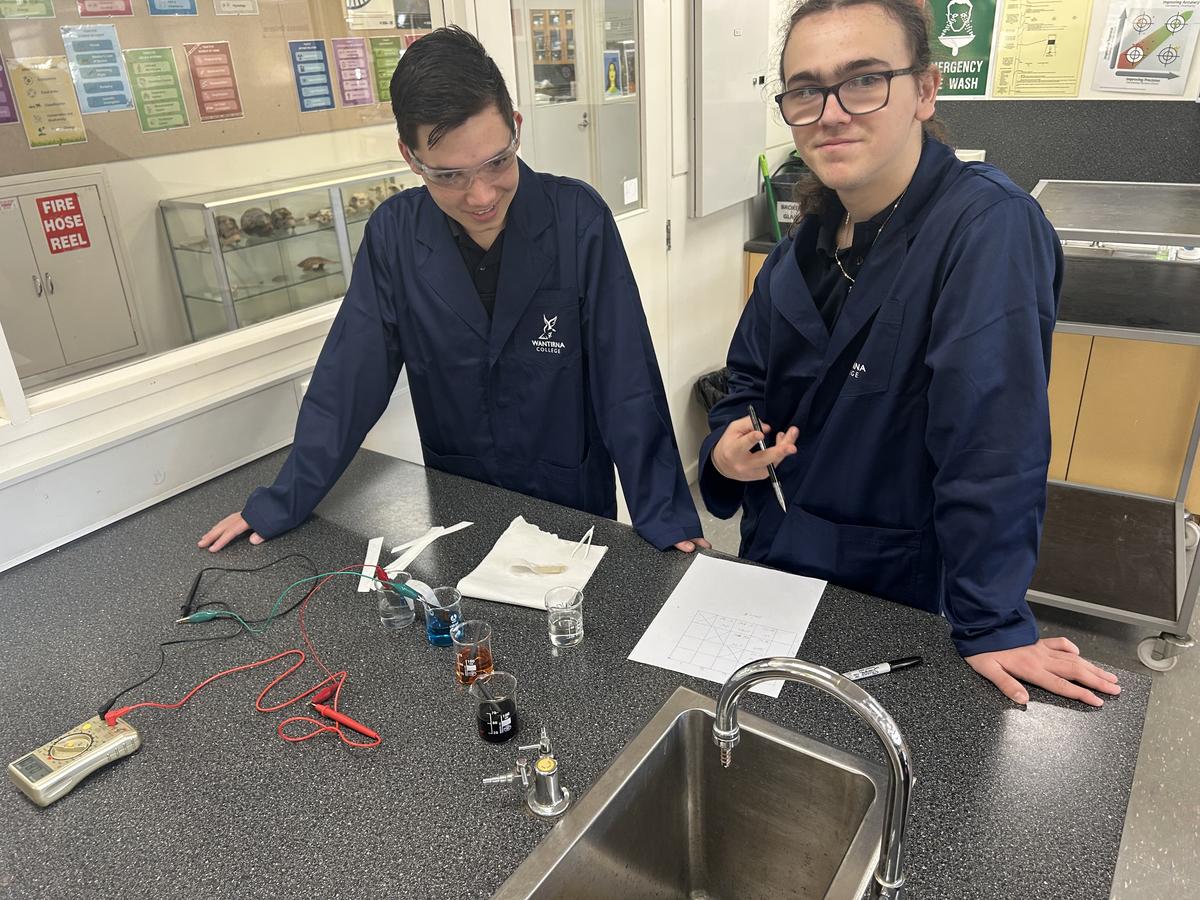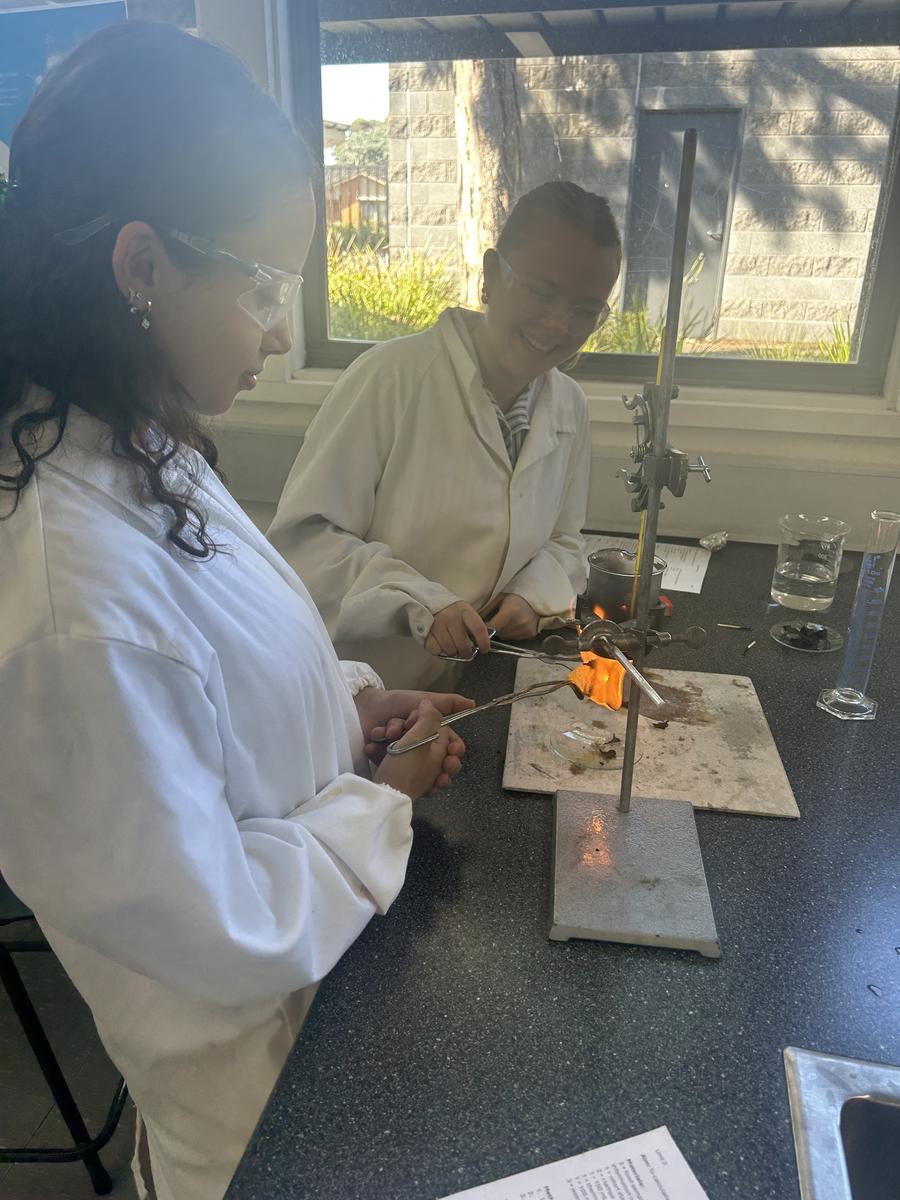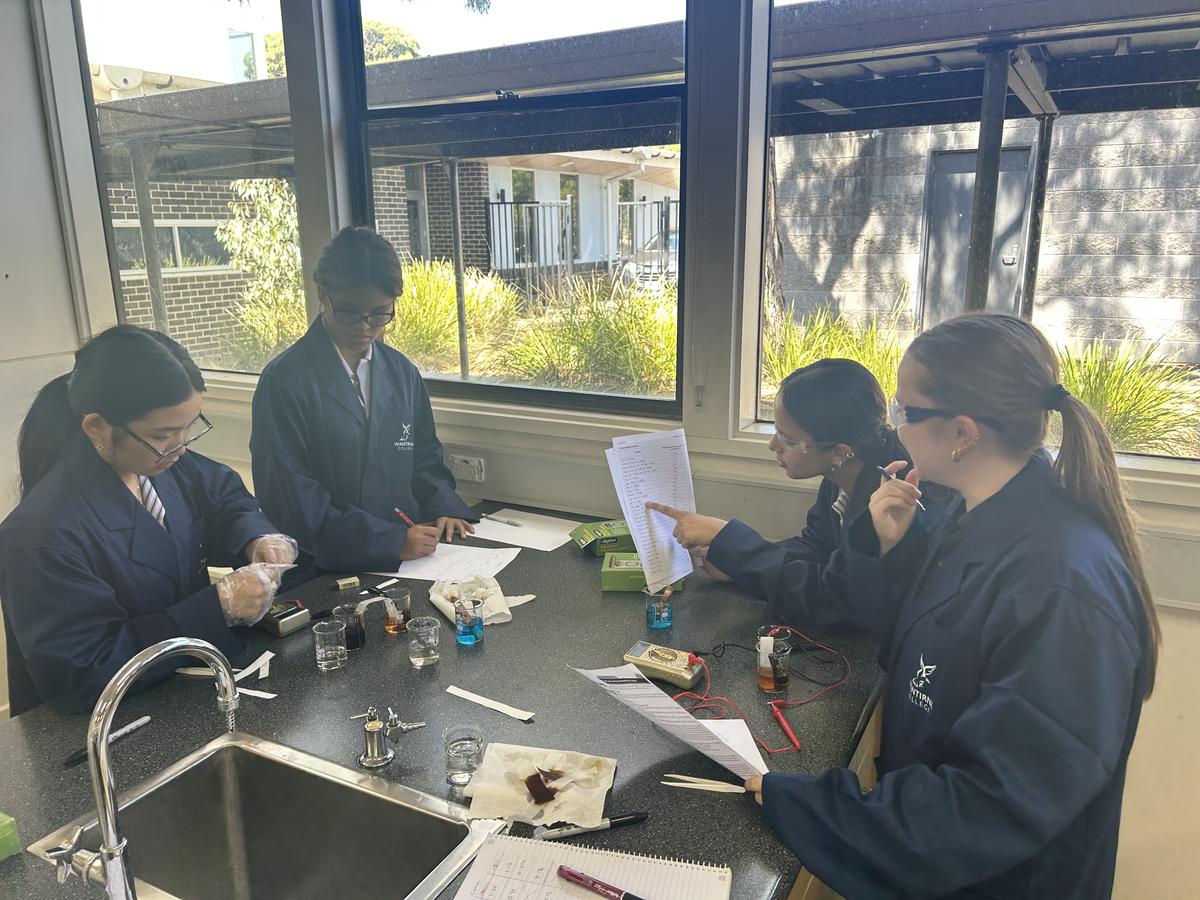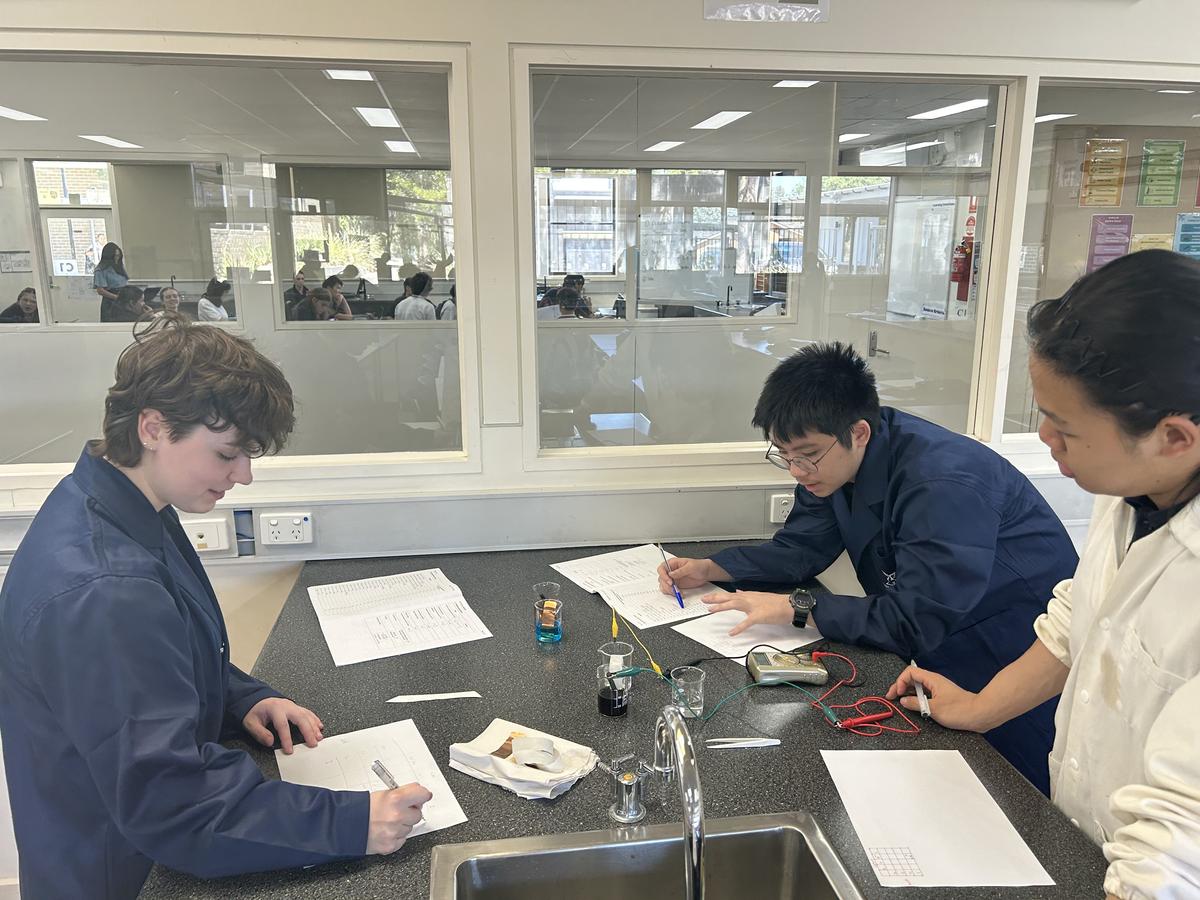Science
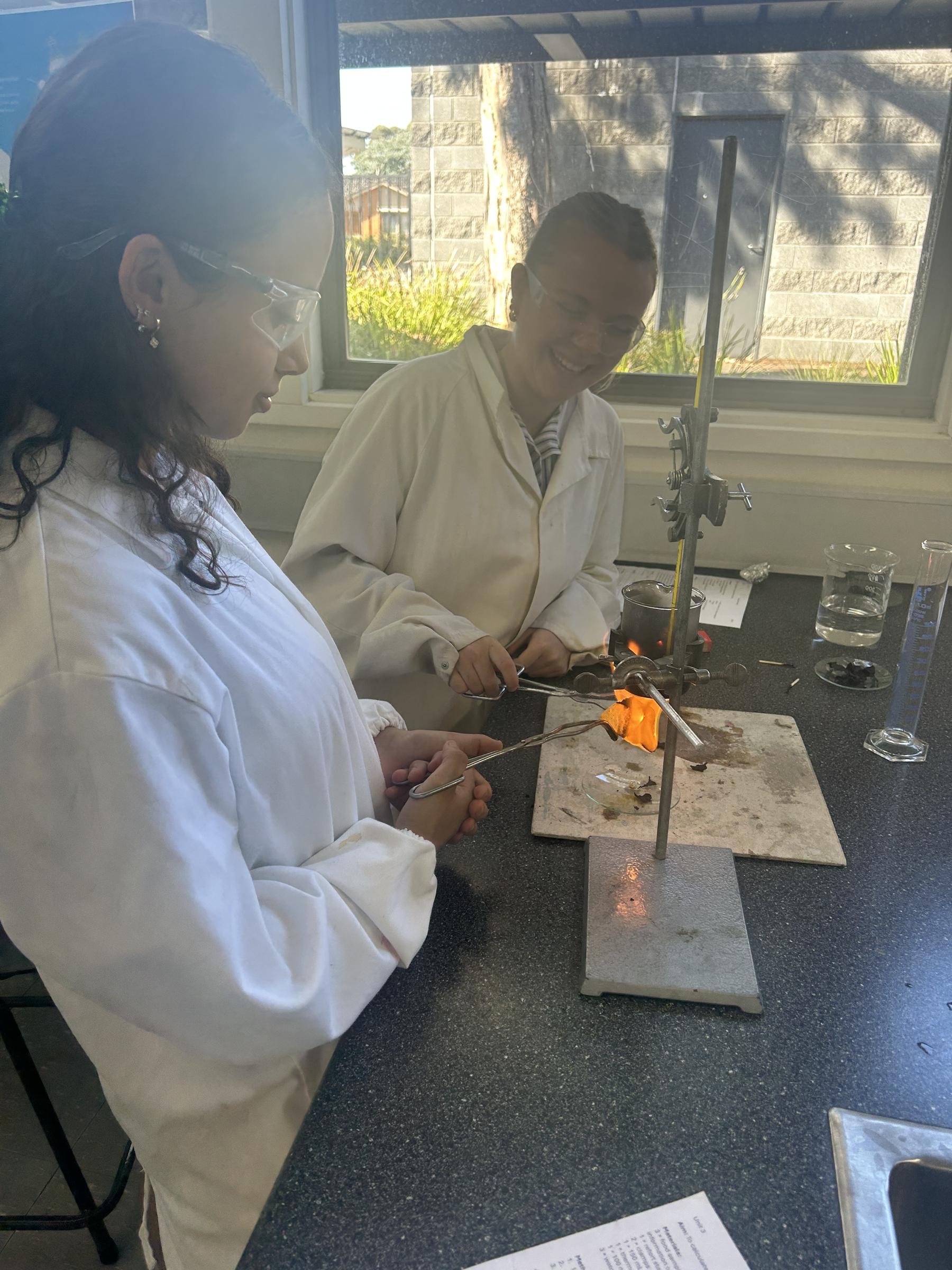
Yr 10 Coke & Mentos Experiment
The classic Mentos and Coke experiment produces an explosive geyser due to the rapid release of carbon dioxide gas. This reaction occurs because the rough surface of the Mentos provides numerous nucleation sites where gas bubbles can form quickly, causing the soda to fizz out forcefully.
When Mentos are crushed before being added to Coke, the reaction can be even more intense because the increased surface area allows for even more nucleation sites, leading to a faster and more vigorous eruption. While whole Mentos create a tall, steady geyser, crushed Mentos can cause a more chaotic and immediate burst of foam.
Year 10 applied science investigated the reaction and found that crushed Mentos actually produced a smaller reaction but occurred for a longer time.
Peter Kos
Science
VCE Chemistry
Our VCE Chemistry students have been busy exploring the fascinating world of Chemistry this term, looking closely at energy production and the properties of materials through hands-on experiments and in-depth discussions. With a strong focus on practical applications and scientific inquiry, students in Years 11 and 12 have been engaged in a variety of experiments that deepen their understanding of key chemical concepts.
Year 11
Students have been delving into the properties of covalent substances, exploring how molecular structure influences properties such as melting and boiling points, solubility, and conductivity. Through practical modelling, they have observed how different covalent compounds interact with solvents and how molecular shape and intermolecular forces play a crucial role in determining their behaviour.
In our studies on metal reactivity and metallic bonding, students conducted reactivity series experiments, testing how different metals react with oxygen, acids and water. These experiments provided valuable insights into the reactivity trends of metals and the role of metallic bonding in determining their properties. Seeing the vigorous reactions of alkali metals compared to the slower reactions of transition metals was an exciting highlight!
Year 12
Students have been tackling real-world applications of chemistry, focusing on fuels for the body, galvanic cells, fuel cells, and energy production. In our unit on fuels, students examined different energy sources, comparing fossil fuels with biofuels and discussing their environmental impact. Investigating the energy released from combustion reactions allowed students to see first-hand how different fuels provide energy.
In our electrochemistry unit, students constructed their own galvanic cells, exploring how redox reactions generate electrical energy. Testing different combinations of metal electrodes and electrolytes gave students a deeper appreciation for the applications of electrochemistry in batteries and energy storage. Additionally, we explored fuel cells as an alternative energy source, evaluating their efficiency and potential as a sustainable energy solution.
We look forward to continuing this journey of scientific exploration and discovery in the coming weeks. Stay tuned for more exciting updates from our VCE Chemistry classes!
Clara Ranellone
Science

